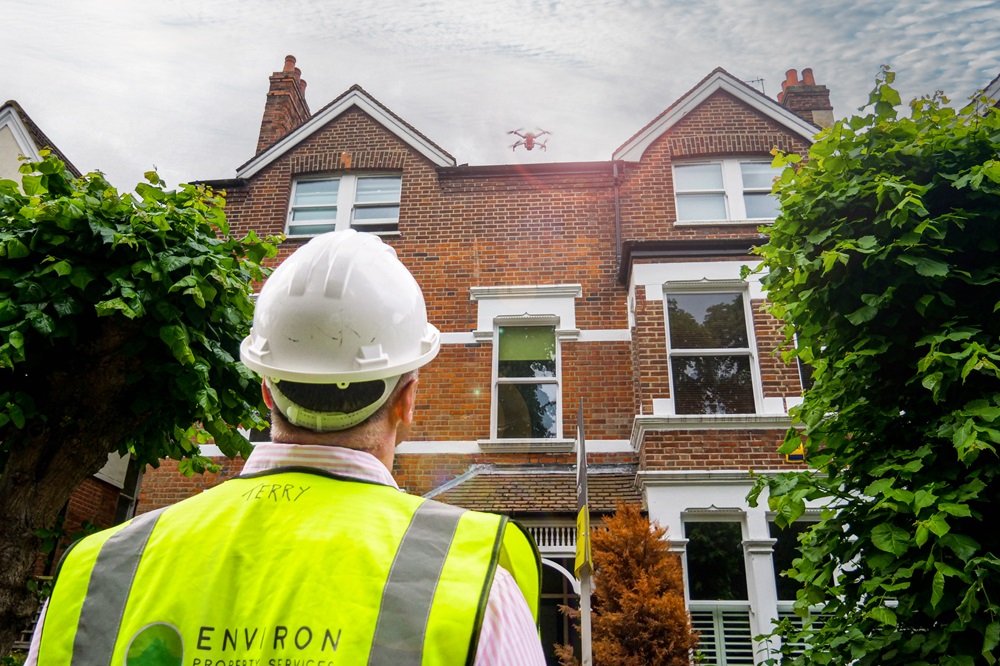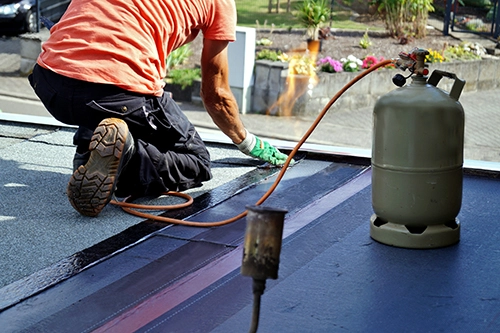- About Us
- Services
- Blog
- Contact
Need a quote?
If you’re looking for the best drone survey in Fulham, look no further than Environ Roofing. We offer an outstanding roofing service that covers a range of industries and sectors.
All of our drones are fitted with professional cameras, ensuring accurate maps and 3D data visualisations can be provided in a large array of data formats.




As one of the best drone survey companies in Fulham, we are capable of analysing any site, regardless of proposed or current developments occurring. With the use of our drones, you are likely to make much better decisions for your roof because the data that is processed is extremely detailed.
This includes being able to survey hard-to-reach areas safely without the need for human surveying. Plus, the pixel cameras we use ensure you will get a clear picture of your roof’s condition.
We pride our drone building survey on being way more efficient than ground surveys. Unlike ground surveys, there is no need to photograph or map large areas. Instead, our drones cover several kilometres during each flight.
Furthermore, our Fulham drone surveys provide an enhanced vantage point and wider overview of a venue when compared to ground surveys. We are capable of identifying subtle differences in the landscape that are not always viewable from the ground.
All the data we collect from an aerial drone survey is processed into large 2D images or 3D models. Therefore, we can detect specific ground control points and produce the necessary digital terrain and elevation models. In addition, our data modelling process consists of topographical data, volumetric analysis and digital terrain modelling.
When compared to other aerial surveys like ones that use helicopters, our drones are more cost-effective to deploy as they can take off from a survey site rather than an airfield.
If you are interested in booking a drone survey in Fulham or you would like further information about our roofing services, please do not hesitate to call us on 020 3971 1901 or send an email to info@environroofingservices.co.uk.
It depends on the construction, but the minimum weight a flat roof must be capable of bearing is 300lbs. This refers to a concentrated weight where a load is positioned on just one area of the roof. So, for example, a commercial flat roof can approximately support a 300lb HVAC unit in a 2.5×2.5ft single space.
If you opt for a flat roof anywhere on your property, remember that it comes with a need for proper maintenance. Low-slope roofing London-wide should be checked every six months or so, or after spells of bad weather, to spot any signs of damage. No matter how small, these should be addressed before they escalate. Remove any debris (leaves, twigs and so on) regularly to avoid these blocking the gutters and allowing water to pool and stand on the roof.
If there are trees in the close vicinity, keep them cut back to reduce the amount of foliage that falls on your flat roof. And check internally for signs of moisture, dampness or water damage on a regular basis. Spotting problems early means resolving them will be cheaper in the long run.

Building a flat roof can be done in three ways. The simplest and most cost-effective choice for levelled roofing London-wide is to construct a warm roof where a roofing membrane is placed over the insulation that keeps the timber structure warm. Another option is to create a cold roof where insulation is positioned between the rafters under the ply roof covering. This is commonly applied to flat-roofed extensions.
The third method is the hybrid roof that contains diverse elements. Their designs require a gap of ventilation above a warm roof to prevent excess moisture within the roof structure.
If you’re looking for flat roofing local contractors, don’t just select the first firm you come across. Find a roofing company that’s been in business for a while and can demonstrate a good track record in installing, repairing, and replacing flat roofs specifically. Ask for recommendations from your own network or from a local trade association. If you need refurbishment work done to 50% or more of your roof, you’ll need a roofing contractor who can self-certify their work under the Competent Person Scheme. Otherwise, the Building Control department at your local authority will need to approve the job before it begins.
Ask whether they are covered by liability insurance and how long they’ll guarantee the work they will carry out. And never just opt for the cheapest quote unless you’re quite sure they’re the best company for the job. You can’t afford to compromise on your roof as the structural integrity of your property depends on it.
Ensuring your flat roof will comply with building regulations before installation can save property owners time, money and stress. First, the roof must have a slope of around 1:80, with water draining away to one or two roof edges. Waterproofing must be extended up to the adjacent walls with at least 150 mm from the surface of the roof.
Contractors must install ventilation in cold roofs. For warm roofs, the deck must be bonded with a VCL. The roof should have the capacity to withstand strong winds and be sturdy enough to take an individual’s weight. Finally, check whether planning permission is needed. Typically, this is only required if you live in a conservation area or a listed building, or are making significant changes to an existing roof.
If you’re looking for top roofing solutions at competitive rates, check out our range of roofing services at Environ Roofing Company London. To get started, call one of our representatives today!

